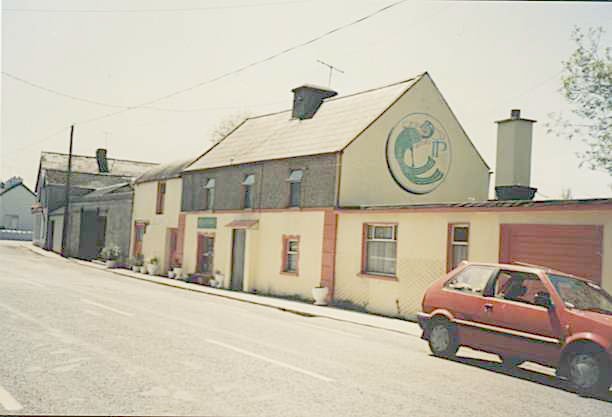Castlemahon Village

The Millenium stone erected to the community of Castlemahon.
|
The Village of Castlemahon
which lies 2 miles South East of Newcastle West, is situated about a half a mile
South of the Bruff line. That is the road that runs East from Newcastle West towards
Bruree and Kilmallock. The old name of the place was Mahoonagh, and this is still
the name of the parish in which Castlemahon is situated. The name Mahoonagh derives
from the Irish (MaighThamhnach ) meaning the plain of tree stumps. Many people
still refer to Castlemahon as Mahoonagh. Cormac Mac Carthaigh who became King
of Munster in 1123,who was known as Cormac Muighe Thamhnach, because he had his
residence in Mahoonagh South of County Limerick, being then reckoned part of the
MacCarthy patrimony of Desmond. After an eventful career Cormac was slain at the
instigation of the O' Briens in his own house in Mahoonagh in 1138. The Norman
family who established themselves in Mahoonagh were the Fitzgibbons . It was they
who built the Castle that centuries later would give Mahoonagh it's new name Castlemahon.
Mahoonagh castle is situated on the banks of the river Deel. The castle is thirty
five feet by twenty four feet, inside, and is thirty five feet high , it's walls
are six and a half feet thick. The ruins of the castle are still to be seen in
Castlemahon, beside the old Abbey and graveyard.
|
Feohanagh (Foughanaugh)

The name Feohanagh means a place of Thistles. The thistle is
denoted in Irish by either Fofannan or (Fohanaun).
In 1659 the census of Limerick found that there was only 34 people living in Feohanagh. In 1704 the parish priest of Mahoonagh who was Rev.John MacEnry who resided in Feohanagh. He was put before a grand Jury for saying Mass, but he was honoured in 1723 by the great poet Aodhgan o' Rahailly, who wrote a poem in his praise. The present church was built in Feohanagh in the 1830's and there was a Mass house used for devine service. A new church was erected in 1836, on the roadside between Newcastle West and Dromcoliher at the expense of £600. |
The Hay Day's in the 40's and 50's in Feohanagh
|
The first machine to start was the
sward turner, next a wheel rake. This was driven along the small rows to gather
the hay into larger rows. This was hard work and required a strong back and no
mean amount of physical strenght to operate. When the contraption gathered a large
amount of hay, you pressed a pedal and pulled a lever, lifting the prongs and
releasing the hay in neat rows across the meadow. Next came the tumbling Jack
or slide- it was made of wood, L-shape with five or six large wooden prongs and
two rounded handles at the top. The horse was guided along the first row and when
the slide was full the farmer would lift the handles, the prongs bit into the
ground and over it went depositing it's load on the spot where the wynde would
be made. Then a group of men with forks would stand at the top to shape the wynde
as the hay would be piled at them. To finish the hay making it would then be raked
down, shaped and often tied with twine.
|